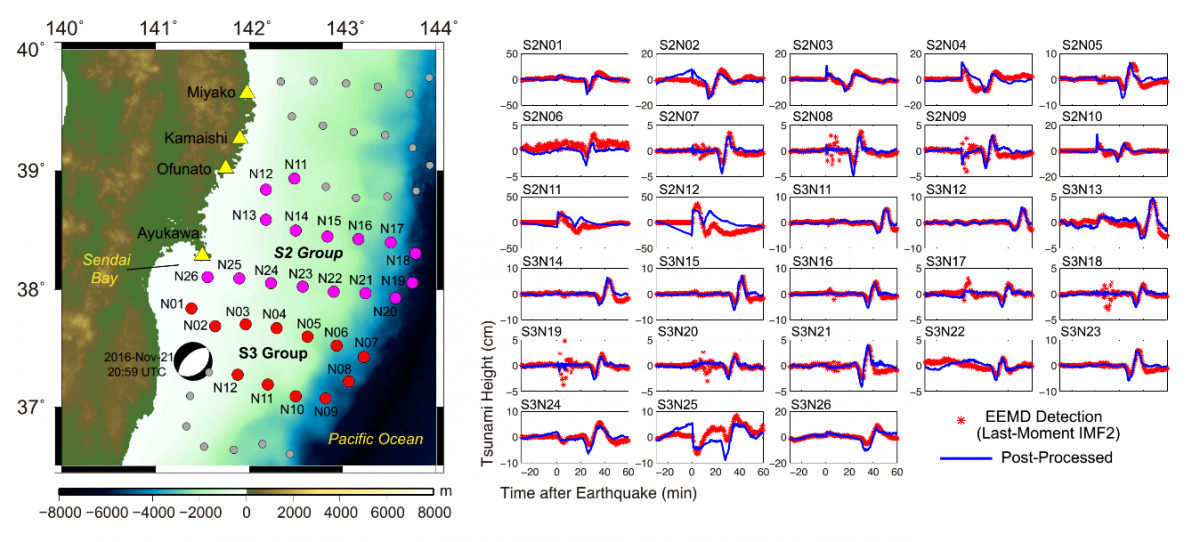Yuchen Wang, Kenji Satake
Seismological Research Letters 92,
2145-2155, 2021 doi: 10.1785/0220200447
After the devastating Tohoku tsunami in 2011, the National Research Institute for Earth Science and Disaster Resilience (NIED) established the Seafloor Observation Network for Earthquakes and Tsunamis (S-net) offshore Japan. The network consists of about 150 cabled seismometers and ocean bottom pressure gauges that are able to transmit data in real time.
On 22 November 2016, an M7.4 earthquake occurred offshore the Fukushima Prefecture. The earthquake generated a moderate tsunami, which was recorded by these ocean bottom pressure gauges. In our study, we used 28 S-net pressure gauge records, with automatic real-time tsunami detection algorithm and tsunami numerical simulation technique, to forecast the tsunami waveforms at four tide gauges on the Sanriku coast. The forecasting method, called tsunami data assimilation, does not require seismic source information, yet accurately forecasts tsunami waveforms recorded on coastal stations.
To provide input for data assimilation, the S-net raw records were processed using two different methods; in the first method, we removed the tidal components by polynomial fitting and applied a low-pass filter. In the second method, we used a real-time tsunami detection algorithm based on Ensemble Empirical Mode Decomposition to extract the tsunami signals, imitating real-time operations for tsunami early warning.
We compared the forecasted waveforms with observed waveforms at Miyako, Kamaishi, Ofunato, and Ayukawa tide gauges. The scores of forecast accuracy of the two detection methods are 60% and 74%, respectively, for a time window of 35 min, but they improve to 89 % and 94 % if we neglect the stations with imperfect modeling or insufficient offshore observations. Hence, we demonstrate that the tsunami data assimilation approach can be put into practice with the help of the real-time tsunami detection algorithm.
This work is supported by Ministry of Education, Culture, Sports, Science and Technology (MEXT) of Japan, under KAKENHI 16H01838 (KS) and 19J20293 (YW).


